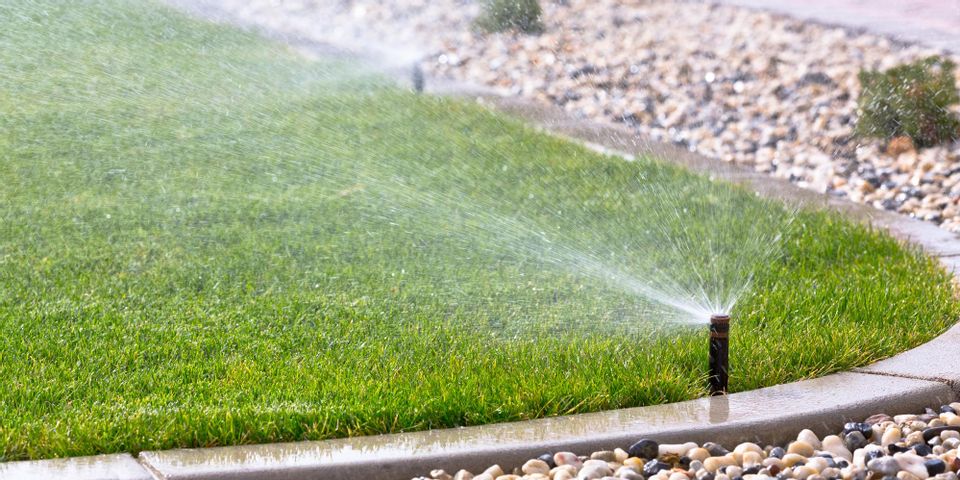A Quick Guide to Watering Your Lawn

Programming your sprinkler system with a regular schedule is a must to ensure your lawn grows lush and green. But before you start the sprinklers in the spring, you should know how much water to use and how often to turn on the system. Here’s some important information to ensure you use the sprinklers effectively.
How Much Water Does Your Lawn Need?
Most lawns require about one inch of water per week. However, the amount of time it takes to dispense one inch of water depends on your sprinkler system. If you know your system’s gallons per minute (GPM) flow rate, you can determine the time using a simple math formula.
Take the square footage of your lawn and multiply it by 0.62 gallons. Then, divide the answer by the GPM. The resulting number is how many minutes you need to run the sprinklers each week.
If you don’t know the GPM, set an empty can or container in an area that gets adequate water coverage. Turn on the sprinklers and record how long it takes for the can’s water level to reach one inch.
Tips for Watering Your Lawn
Water at the Right Time
 Water before 10 am, when cooler temperatures prevent evaporation. This gives the soil time to absorb the water before the sun dries it out. If you can’t water in the morning, do it in the late afternoon before it gets dark. Never water at night: the grass stays wet for longer, potentially causing fungal growth.
Water before 10 am, when cooler temperatures prevent evaporation. This gives the soil time to absorb the water before the sun dries it out. If you can’t water in the morning, do it in the late afternoon before it gets dark. Never water at night: the grass stays wet for longer, potentially causing fungal growth.
Water No More Than Twice a Week
Rather than water a few minutes every day, it’s better to water less often for longer periods. Otherwise, you risk oversaturating the soil. Clay soils usually need watering about once a week, while sandy soils can be watered about twice a week or every three days.
Test the Soil
Even if you have a timed sprinkler system, check your lawn to ensure it receives sufficient water. The screwdriver test is a quick method that involves sticking a long-blade screwdriver into the ground after watering. If the soil is adequately watered, the screwdriver should go at least six inches down. If it stops short, the soil is dry and needs more watering.
Monitor Your Lawn
There are visual signs that indicate whether the lawn is being watered properly. Dry, cracked soil and brittle grass with brown or yellow patches are signals that the lawn isn’t getting enough water. Conversely, symptoms of an overwatered lawn include limp grass, mushroom sprouts, and pooling water.
Keep your grass hydrated and healthy with an in-ground sprinkler system installed by Maxum Irrigation in Waterford, CT. For more than fifteen years, their team has been equipping clients with top-of-the-line sprinklers that provide maximum lawn coverage without wasting water. To inquire about installation, call (860) 525-7000 or visit their website to learn more about their services.
About the Business
Have a question? Ask the experts!
Send your question

